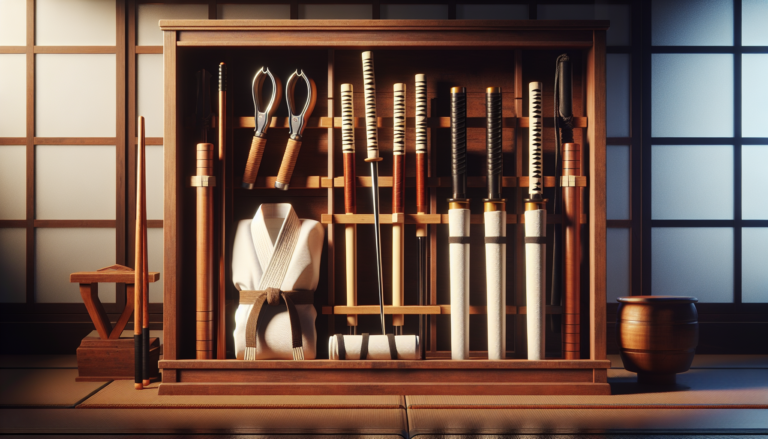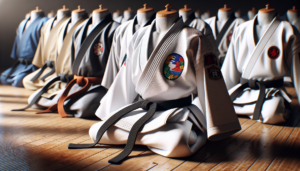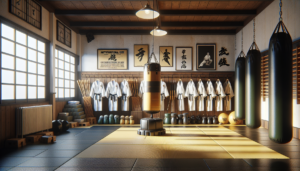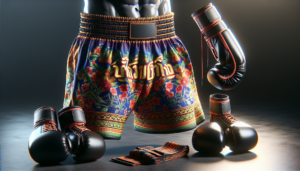Introduction to Karate Weapons
Karate, meaning “empty hand” in Japanese, is a martial art traditionally practiced without weapons. However, the evolution of Karate has led to the incorporation of various weapons into training, adding depth and diversity to this ancient art form. The karate weapons list includes an array of tools that have become essential for practitioners seeking to master all aspects of this traditional martial art.
The Evolution of Karate and Weaponry
Karate originated in Okinawa, Japan, where it developed as a form of self-defense during a time when weapons were prohibited by the ruling Satsuma clan. Despite the ban, Okinawans secretly trained with everyday objects, such as farm tools, which eventually evolved into the karate weapons list we know today.
As Karate spread beyond Okinawa, it underwent further refinements and adaptations. The inclusion of weapons training, known as Kobudo, became an integral part of many Karate styles. This evolution showcased the ingenuity and resourcefulness of Okinawan martial arts practitioners in the face of adversity.
The Role of Kobudo in Karate
Kobudo, the practice of traditional martial arts weapons, is closely linked to Karate. Many Karate schools incorporate Kobudo training to provide students with a comprehensive understanding of the art. Kobudo weapons not only enhance physical conditioning but also teach discipline, coordination, and situational awareness.
By studying Karate training alongside Kobudo, practitioners gain a deeper appreciation for the historical context and cultural significance of these weapons. The integration of Kobudo into Karate practice allows students to connect with the roots of the art while developing a well-rounded skill set.
Essential Weapons in the Karate Weapons List
The karate weapons list comprises an array of traditional martial arts weapons, each with its own unique characteristics and applications. Among these, several Kobudo weapons stand out as essential tools for Karate practitioners to master.
Bo Staff: The Versatile Long Staff
The Bo staff, a long wooden staff typically measuring six feet in length, is one of the most fundamental weapons in the karate weapons list. Its versatility lies in its ability to be used for striking, blocking, and even sweeping techniques. Mastering the Bo staff develops strength, balance, and coordination, making it an excellent foundation for other traditional martial arts weapons.
Bo staff techniques often involve a combination of spins, strikes, and thrusts, allowing practitioners to maintain a safe distance from their opponents. The length of the Bo staff also enables users to control a larger area, making it an effective tool for self-defense against multiple attackers.
Sai: The Short, Pronged Weapon
The Sai, a short, pronged weapon, is another iconic item on the karate weapons list. Traditionally used in pairs, the Sai consists of a pointed central prong flanked by two shorter, curved prongs. This unique design allows practitioners to trap and disarm an opponent’s weapon while delivering swift strikes and punches.
Mastering the Sai requires dexterity and precision, as the weapon’s short range demands close-quarters combat. Sai training emphasizes quick, decisive movements and the ability to transition between offensive and defensive techniques seamlessly, making it a valuable addition to any Karateka’s arsenal of traditional martial arts weapons.
Nunchaku: The Iconic Dual Baton
The Nunchaku, made famous by martial arts legend Bruce Lee, consists of two short wooden batons connected by a rope or chain. Its fluid, high-speed movements make it a visually striking and intimidating weapon on the karate weapons list. Nunchaku techniques involve a combination of strikes, blocks, and traps, requiring significant hand-eye coordination and spatial awareness.
Despite its popularity in media, the Nunchaku is a challenging weapon to master. Proper training is essential to avoid self-injury and to effectively utilize its potential in combat. When wielded by a skilled practitioner, the Nunchaku becomes a formidable tool for self-defense and a testament to the dedication required to excel in traditional martial arts weapons.
Tonfa: The Multi-Purpose Baton
The Tonfa, a wooden baton with a perpendicular handle, is a versatile weapon on the karate weapons list. Originally used as a millstone handle, the Tonfa’s L-shaped design allows for a variety of gripping and striking techniques. Its compact size makes it easy to carry and conceal, while its sturdy construction enables powerful strikes and blocks.
Tonfa training focuses on developing strong wrist and forearm muscles, as well as quick, agile movements. By mastering the Tonfa, Karate practitioners enhance their close-quarters combat skills and learn to adapt to various self-defense scenarios, further expanding their proficiency in traditional martial arts weapons.
Kama: The Sickle-Like Weapon
The Kama, a sickle-like weapon, is a lesser-known but equally important addition to the karate weapons list. Traditionally used for farming, the Kama features a sharp, curved blade attached to a wooden handle. Its design allows for slashing, hooking, and trapping techniques, making it a formidable tool in the hands of a skilled practitioner.
Kama training emphasizes precision, timing, and the ability to control the weapon’s momentum. By learning to wield the Kama effectively, Karate practitioners develop a keen sense of distance and timing, essential skills for success in traditional martial arts weapons.
Additional Weapons in Karate
While the Bo staff, Sai, Nunchaku, Tonfa, and Kama are among the most well-known karate weapons list, there are several other traditional martial arts weapons that enrich the practice of Karate and Kobudo.
Eku: The Boat Oar Weapon
The Eku, a weapon resembling a boat oar, is a unique addition to the karate weapons list. Its long, flat blade and sturdy handle make it suitable for both striking and blocking techniques. The Eku’s length provides practitioners with an advantage in terms of reach, while its weight aids in delivering powerful strikes.
Training with the Eku enhances upper body strength, grip, and overall coordination. By incorporating Eku techniques into their practice, Karate practitioners diversify their skills and gain a deeper understanding of the versatility of traditional martial arts weapons.
Tekko: The Knuckle Duster
The Tekko, a small, hand-held weapon resembling a knuckle duster, is a lesser-known but effective tool on the karate weapons list. Made of metal or wood, the Tekko fits around the fingers and across the knuckles, providing a solid striking surface for close-quarters combat.
Tekko training focuses on developing strong, precise punches and enhancing hand dexterity. By incorporating the Tekko into their practice, Karate practitioners learn to deliver powerful, concentrated strikes while minimizing the risk of injury to their hands, expanding their repertoire of traditional martial arts weapons.
Suruchin: The Rope Weapon
The Suruchin, a weighted rope or chain weapon, adds a unique dimension to the karate weapons list. Consisting of a rope with weighted ends, the Suruchin can be used for striking, entangling, and even throwing techniques. Its fluid nature requires practitioners to develop a high level of control and precision to wield it effectively.
Suruchin training enhances coordination, timing, and the ability to adapt to unpredictable situations. By mastering the Suruchin, Karate practitioners gain a versatile tool for self-defense and expand their understanding of the diverse range of traditional martial arts weapons.
The Importance of Proper Training and Supervision
While the karate weapons list offers a wide array of tools for practitioners to master, it is crucial to approach Karate training with proper guidance and supervision. Traditional martial arts weapons can be dangerous if used incorrectly, making it essential to prioritize safety and gradually progress through the ranks.
Safety Measures in Weapon Training
When training with weapons from the karate weapons list, safety should always be the top priority. Proper protective gear, such as padded gloves, helmets, and body armor, should be worn during partner drills and sparring sessions. It is also essential to train in a controlled environment with adequate space and appropriate flooring to minimize the risk of injury.
In addition to physical safety measures, Karate training with traditional martial arts weapons requires a strong foundation in discipline and respect. Students must learn to handle weapons with care and only use them under the guidance of a qualified instructor. By instilling a sense of responsibility and self-control, Karate practitioners can safely and effectively incorporate weapons into their training.
Enhancing Karate Practice with Weapons
Incorporating weapons from the karate weapons list into Karate training offers numerous benefits for practitioners. By training with traditional martial arts weapons, Karate students develop greater physical strength, coordination, and mental focus. Weapons training also encourages the refinement of technique, as the added weight and length of the weapons require precise movements and control.
Moreover, studying the historical and cultural context of each weapon deepens a practitioner’s understanding and appreciation of the art. By connecting with the roots of Karate and Kobudo, students gain a more comprehensive perspective on the evolution and significance of these traditional martial arts weapons.
Conclusion: Mastery Through Weapon Training
The karate weapons list is a testament to the rich history and versatility of this ancient martial art. By incorporating traditional martial arts weapons into their Karate training, practitioners expand their skills, deepen their understanding, and connect with the essence of the art.
However, the path to mastery is not a solitary one. Seeking guidance from experienced instructors and training alongside dedicated peers is essential for safe, effective progress. Through proper training and a commitment to discipline, respect, and continuous learning, Karate practitioners can unlock the full potential of the karate weapons list and achieve new levels of personal and martial arts growth.
As the saying goes, “It’s not about the destination, it’s about the journey.” Embrace the challenges and opportunities presented by traditional martial arts weapons, and let your Karate journey be one of self-discovery, resilience, and the pursuit of excellence.






